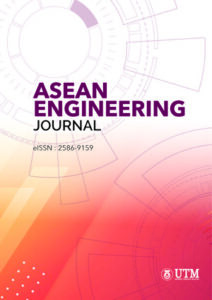SHAPE OPTIMIZATION OF ROCKFILL DAM WITH RUBIK CUBE REPRODUCTION BASED MULTI-OBJECTIVE PARTICLE SWARM ALGORITHM
DOI:
https://doi.org/10.11113/aej.v11.18021Keywords:
Earth dams, Design methods & aids, Safety & hazardsAbstract
A rockfill dam's quality and its economic aspects are inextricably interwoven with each other. Approaching the optimal design of a rockfill dam paves the path to achieve the best quality with the fewest expenses. Choosing the Sardasht rockfill dam as a case study, two semi-empirical models are presented for seepage and safety factor. These two models, together with construction costs, were employed as three objective functions for the Sardasht rockfill dam's shape optimization. Optimization was handled using a robust multi-objective particle swarm optimization algorithm (RCR-MOPSO). A new reproducing method inspired by a Rubik's cube shape (RCR) and NSGA-III are building blocks of RCR-MOPSO. Three benchmark problems and two real-world problems were solved using RCR-MOPSO and compared with NSGA-III and MOPSO to ensure the performance of RCR-MOPSO. The solution quality and performance of RCR-MOPSO are significantly better than the original MOPSO and close to NSGA-III. Nevertheless, RCR-MOPSO recorded a 38% shorter runtime than NSGA-III. RCR-MOPSO presented a set of non-dominated solutions as final results for the Sardasht rockfill dam shape optimization. Due to the defined constraints, all solutions dominate the original design. Regarding the final results, compared with Sardasht dam's original design, the construction price was reduced by 31.12% on average, while seepage and safety factor improved by 15.84% and 27.78% on average, respectively.
















